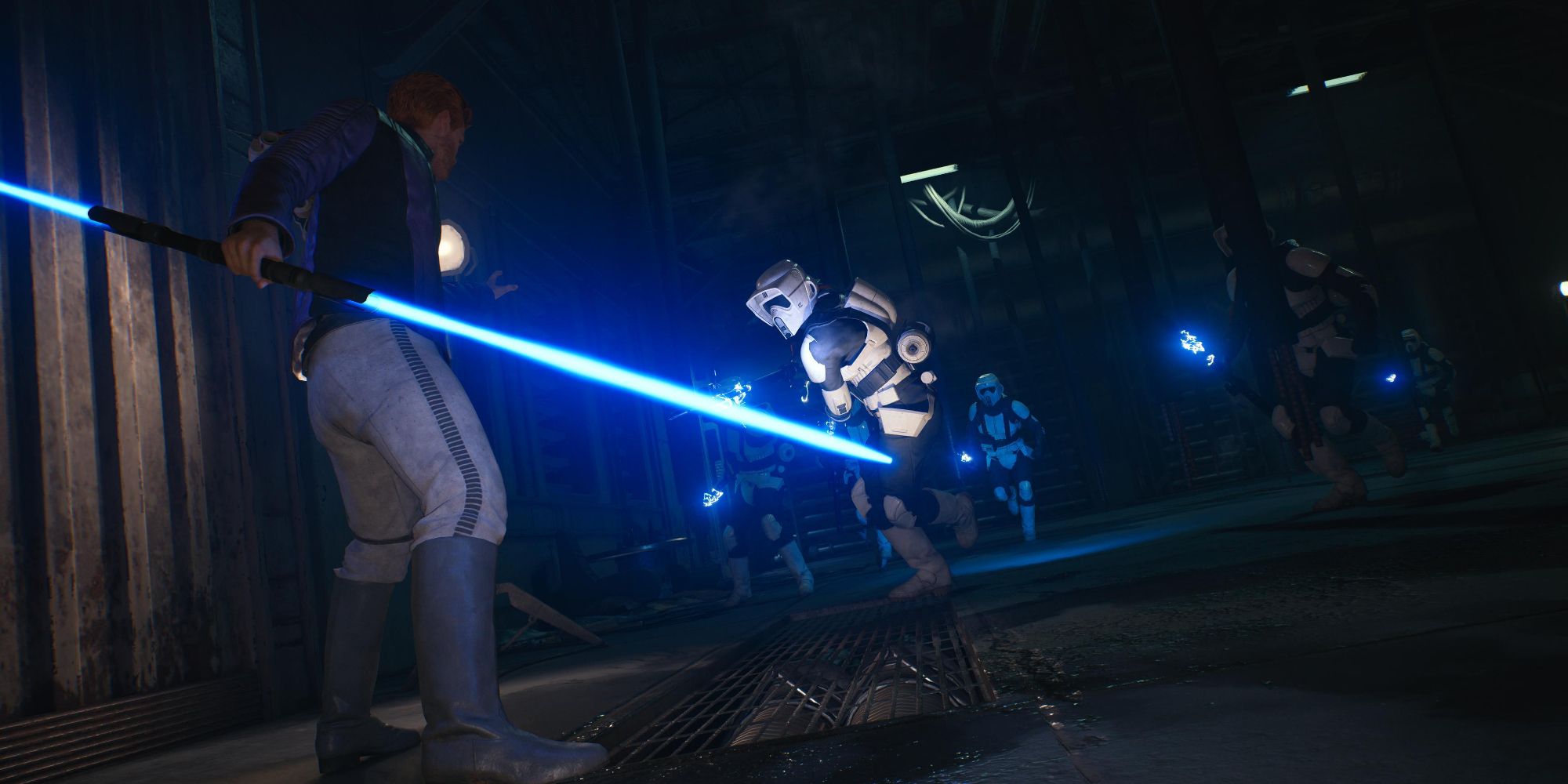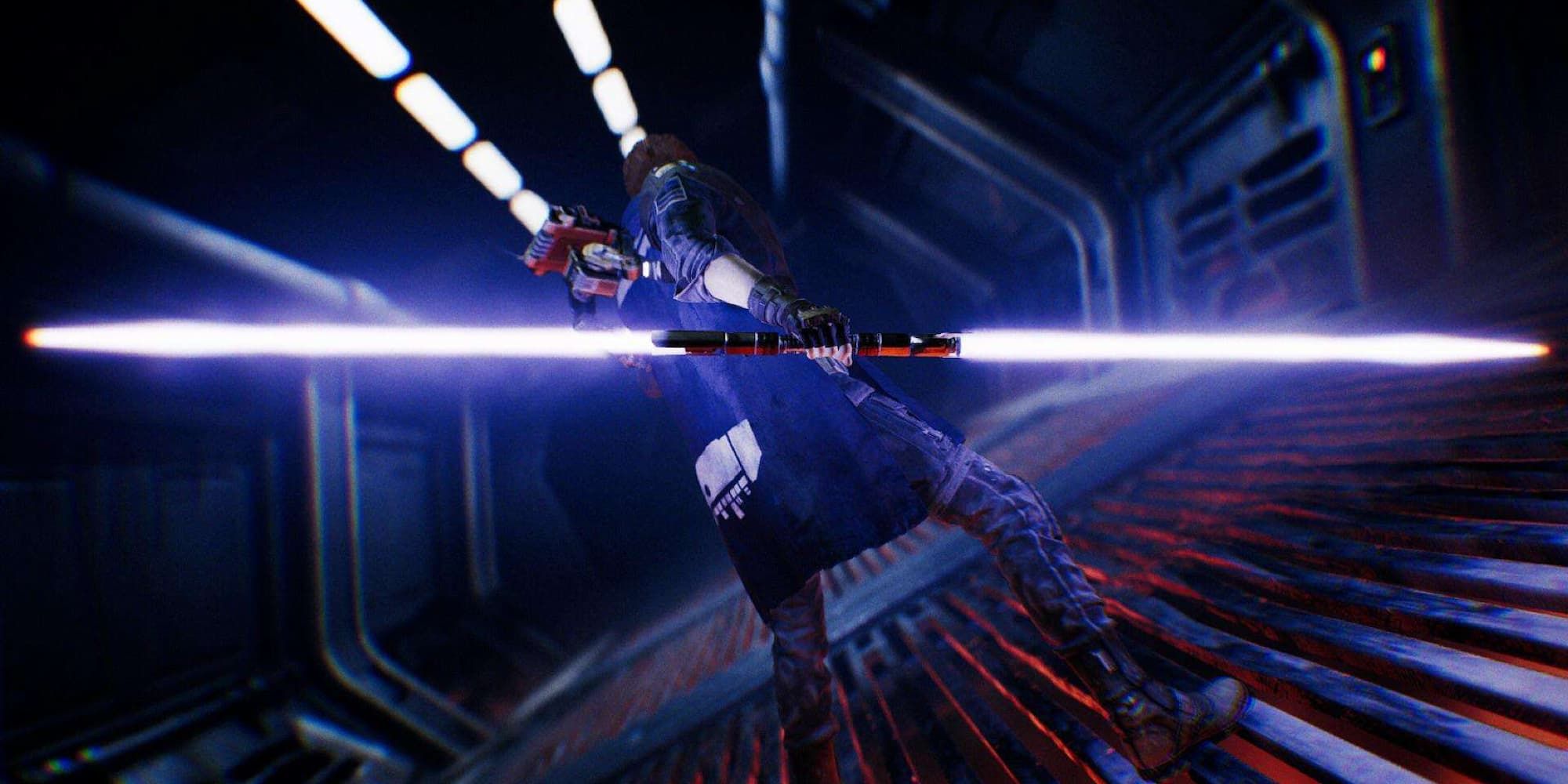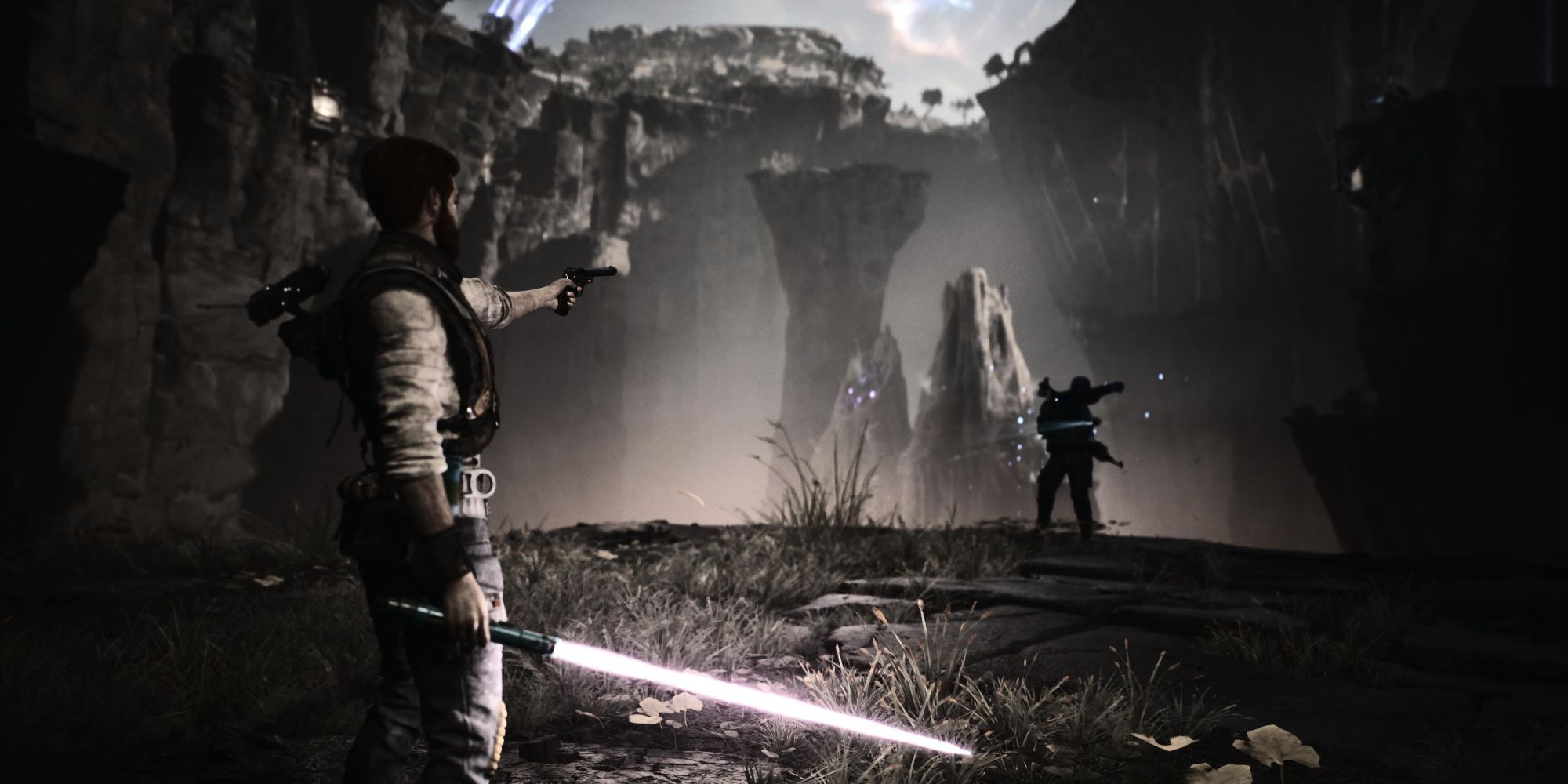Phrases like, 'this game makes you really feel like this thing' get thrown around often, and it’s usually the result of deliberate game design. It’s only natural that Insomniac’s Spider-Man series makes you feel like Spider-Man, or that Rocksteady’s Batman games make you feel like Batman. It’s what those games were designed to do, and therefore the intended power fantasy is evident.
What fascinates me, however, is when a game crosses the streams; when one experience has the echo of another. I’m really looking forward to Star Wars Jedi: Survivor, and I’ve also played both Jedi: Fallen Order and FromSoftware’s Sekiro: Shadows Die Twice. Despite everything, only one of those games really made me feel like I was in the shoes of a Jedi, struggling back and forth with a deadly enemy. And it wasn’t the game where I wielded a lightsaber.
The boss fight against Genichiro atop Ashina Castle has been dissected before, and for good reason. It’s a classic FromSoftware difficulty barrier, one that demands you become comfortable with the game’s systems before progressing. Said systems demand a rhythm-game style flow, a river of focus which runs between parries, attacks, jumps, and Mikiri counters.
In Jacob Geller’s video essay, Sekiro’s Parry and Other Pursuits of Perfection, he discusses how the fight motivated him to pick up the piano again. He references the book Zen and the Art of Motorcycle Maintenance, and a passage on altering one’s perception to solve the issue of a stuck screw. Difficult games, especially ones built around such a specific call and response system, force us to take a step back and evaluate ourselves. They can be bizarrely mindful experiences.
Miyamoto Musashi was a Japanese swordsman and philosopher from the late 16th century, and coincidentally someone that Geller references in his video description. In his book, The Book of Five Rings, he writes that it is, “essential to practice an attitude of not dwelling on anything,” directly linking the pursuit of martial arts to Buddhism and zen. “When an opponent raises his sword, your mind turns to the sword. If he whirls to the right, your mind turns to the right; if he whirls to the left, your mind turns to the left.” This will sound very familiar to anyone who’s entered that flow state in any action game.
This zen combat philosophy is a key inspiration for the Jedi, both in the original movies and extended media. Jedi are dissuaded from forming attachments, and they must achieve a specific kind of mindfulness to tap into a wider perception and consciousness. Through this lens, 'becoming one with the Force' simply means entering a state of dispassionate focus, it’s about meditation as much as it’s about swinging a cool laser sword around.
Obviously, the idea that I obtained any real spiritual practice from a difficult fight in a video game is an overstatement. Yet Jacob Geller was motivated to pick up piano again, and I was still impacted by the mindful state the game had brought about in me.
Sekiro’s mechanics, then, already place you in the shoes of a Jedi. But there’s also a strong cultural link between Star Wars and the samurai-style duel with Genichiro. George Lucas has said that he was inspired by Akira Kurosawa, and famously borrowed many plot points from The Hidden Fortress. Even the word Jedi comes from Jidaigeki, a genre of samurai drama.
It’s fitting, then, that Respawn’s series and Sekiro share echoes with one another, and that Sekiro made me feel like a Jedi. That experience is innately linked to feeling like a samurai, as these stories share cultural DNA as a matter of tradition.
So why, then, did Sekiro do a better job of making me feel this way? The first and most obvious culprit is that the games have vastly different approaches to difficulty. I’m not a difficulty purist, and I think Fallen Order’s settings are ultimately a good thing. However, because of its more accessible settings, it wouldn’t be appropriate to have a ‘wall’ style boss the player needs to overcome, as it would be teaching a different lesson at every difficulty level.
Sekiro’s a more focused experience. While I thoroughly enjoyed Fallen Order’s boss fights, none of them quite reached the refinement present in Sekiro’s bosses, like Genichiro or the Great Shinobi Owl. FromSoftware had already established a pedigree, and boiled down the mechanics of its previous games into a laser-point toolkit. Respawn, meanwhile, was mainly known for the Titanfall series: a game like Fallen Order was new territory for them.
Perhaps Jedi: Survivor just can’t deliver on the exact fantasy Sekiro gave me without a major shift in design attitude. This isn’t a problem for me at all; I want games to be different, and I certainly don’t need another pure Soulslike experience. If it manages to make me feel like a Jedi in the way Sekrio did, it’ll be because Respawn has sanded down the rough edges in the first game’s combat and boss design. It’s simply a matter of confidence and polish.
Maybe I’ll forever be chasing the Jedi high that Sekiro gave me, but I think that’s fine. Jedi: Survivor will ultimately be aiming for a different set of experiences than those found in a FromSoftware game. In a way, a game about shinobi and samurai giving me the best lightsaber duel experience I’ve ever had isn’t a contradiction; it’s keeping a tradition of cultural exchange that goes back to the original trilogy. It’s a link between two games from two different studios that share the same beating heart as their predecessors in film.





